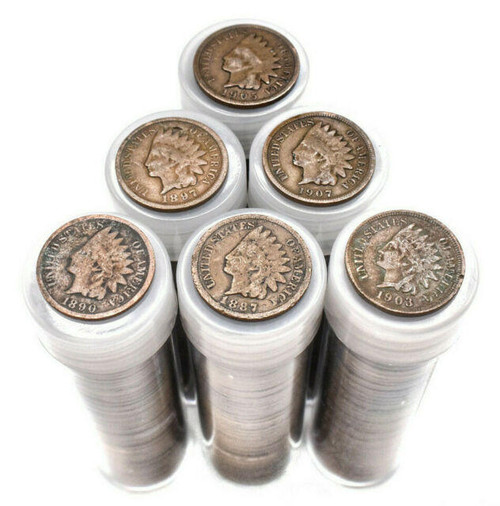Buy Indian Head Penny Online
Looking to Buy Indian Head Penny Online? The Indian Head Penny is one of the most popular cents to ever be produced. It is interesting to note that from the years 1859-1864, the Indian Head Penny was struck in a Copper-Nickel alloy. Once the Civil war came, Nickel, among other metals, were needed for the war effort. This caused countless Copper-Nickel Pennies to disappear out of circulation and all subsequent pennies to be struck in a smaller, copper only issue. Anything that has to do with the Civil was is sought after! Own a piece of history that was wiped out of circulated due to the war! Each coin is in collector's quality circulated condition and the date will be randomly selected, we cannot guarantee specific dates.
Each coin will be in circulated condition.
Learn the mintage, history, and value of every Indian Head Penny ever minted here!
Highlights:
- Rare civil war remnant
- Copper-nickel alloy
- Mixed/random dates
- Struck in 88% Copper and 12% in Nickel
- Individual coins come in protective packaging
- Designed by James B. Longacre
- Obverse: Depicts a representation of Liberty wearing a headdress
- Reverse: Features the words "ONE CENT" inside a wreath around the perimeter of the coin
1859-1864 Indian Head Cent varieties and errors
The 1859-1864 Indian Head Cents have several notable varieties and errors that collectors often seek:
-
1859 Transitional Die: Some 1859 cents were struck from leftover 1858 dies, resulting in a coin with a more prominent shield and other slight differences. These are known as "transitional" varieties.
-
1860 Pointed Bust: The 1860 cent has two varieties: Pointed Bust and Rounded Bust. The Pointed Bust features a sharper, more defined bust of Liberty.
-
1864 L on Ribbon: The 1864 cent has two varieties: with and without an "L" on the ribbon. The "L" indicates the designer's initial, James B. Longacre.
-
1864 Small Date: There is a rare 1864 Small Date variety that is highly sought after by collectors.
-
Off-Center Strikes: Some coins may have off-center strikes, where the design is not centered on the coin. These errors can add value, especially if the date or mint mark is partially missing.
-
Clipped Planchet: Coins with a portion of the outer edge missing, known as a clipped planchet, are also collectible.
-
Die Cracks and Cuds: Errors such as die cracks or cuds, which are raised areas on the coin caused by a broken die, can add interest to a coin.
These varieties and errors can significantly affect the value of an 1859-1864 Indian Head Cent, with rare varieties and errors commanding higher prices among collectors.
You may also like: rare coins, 1943 Steel Penny (Roll of 50), 1909-1956 Wheat Penny Circulated (Roll of 50) - Upstate NY Hoard, 1859-1909 Indian Head Cent (Roll of 50), 1808-1857 Large Cent - Circulated.










